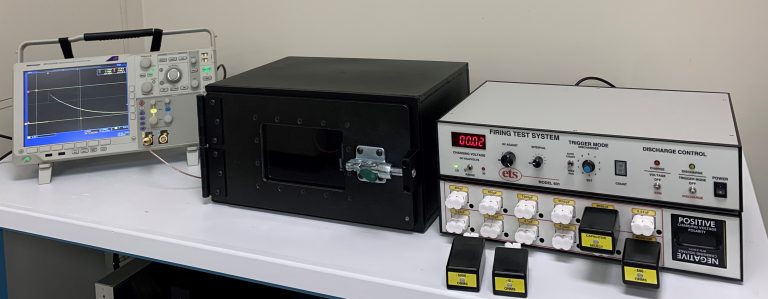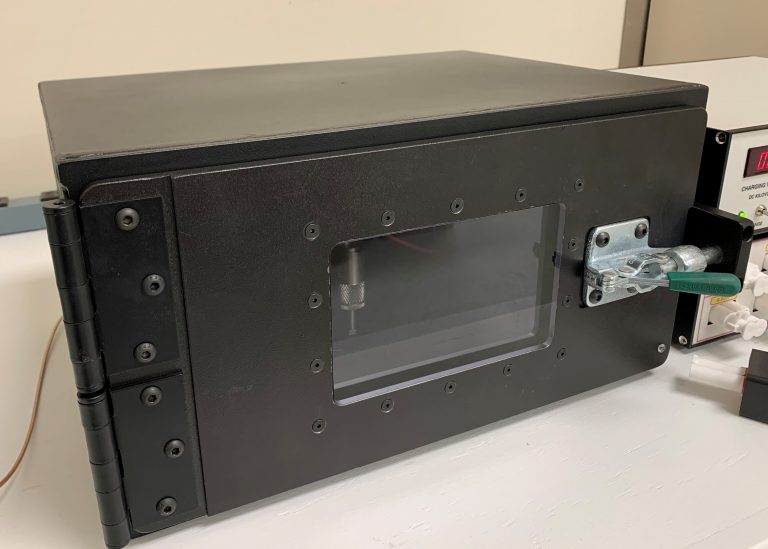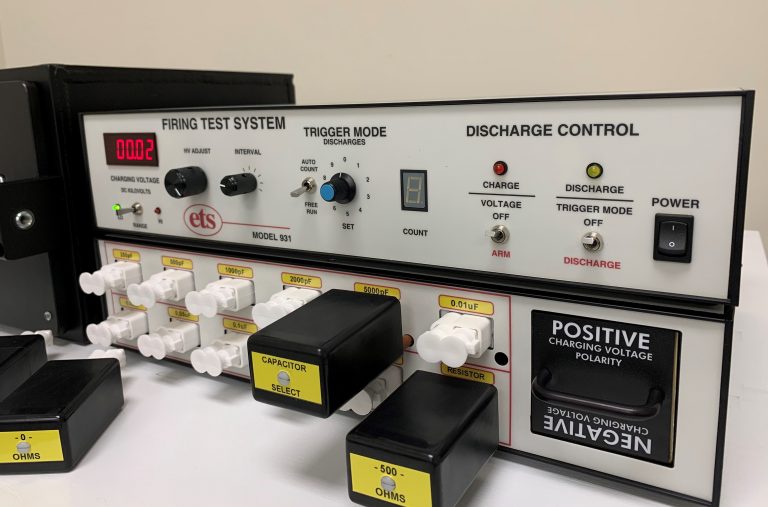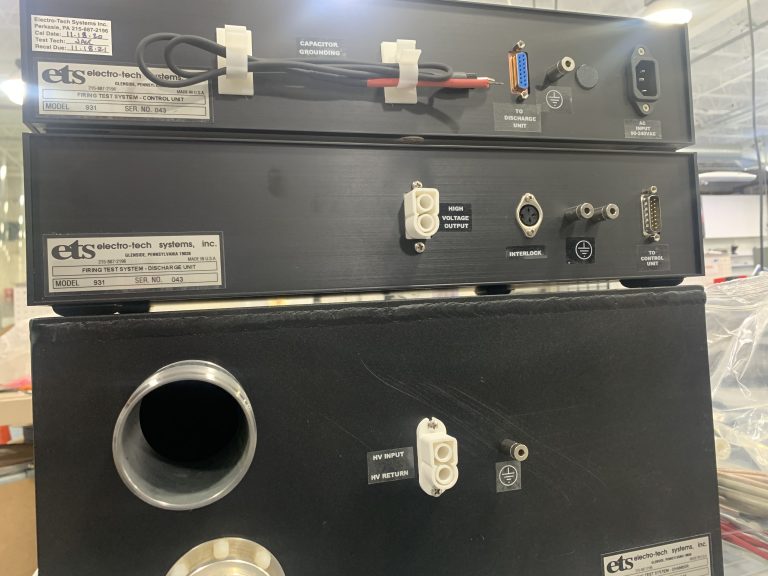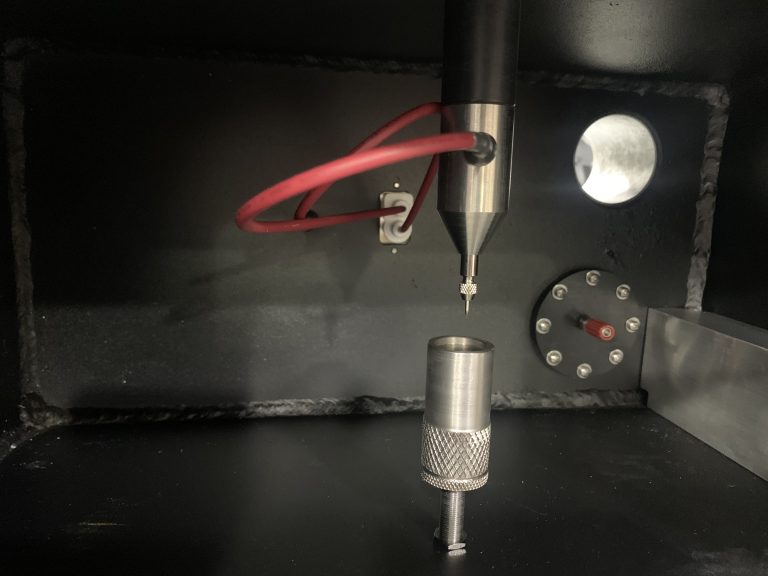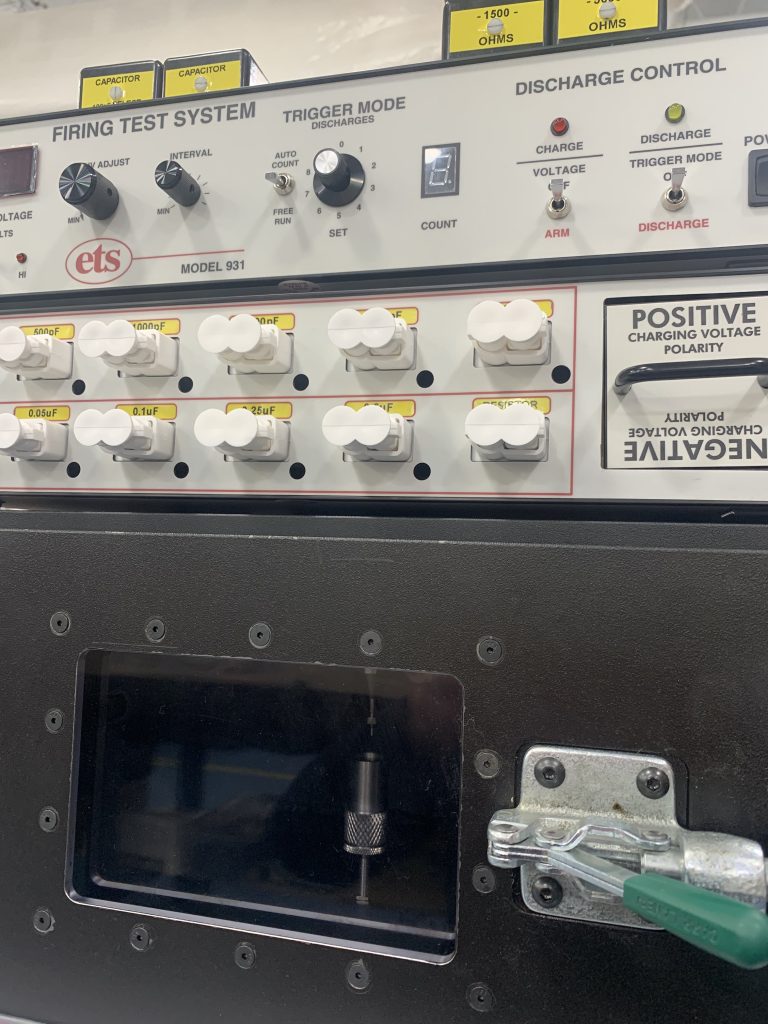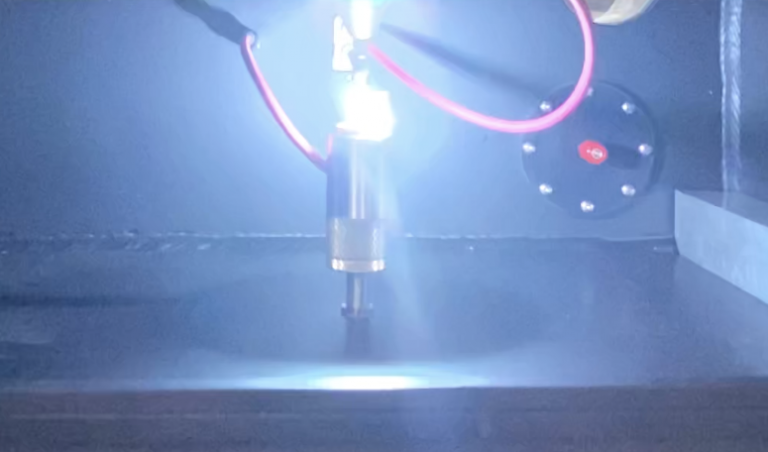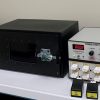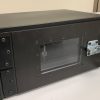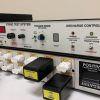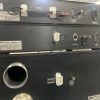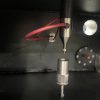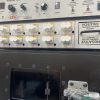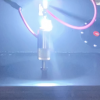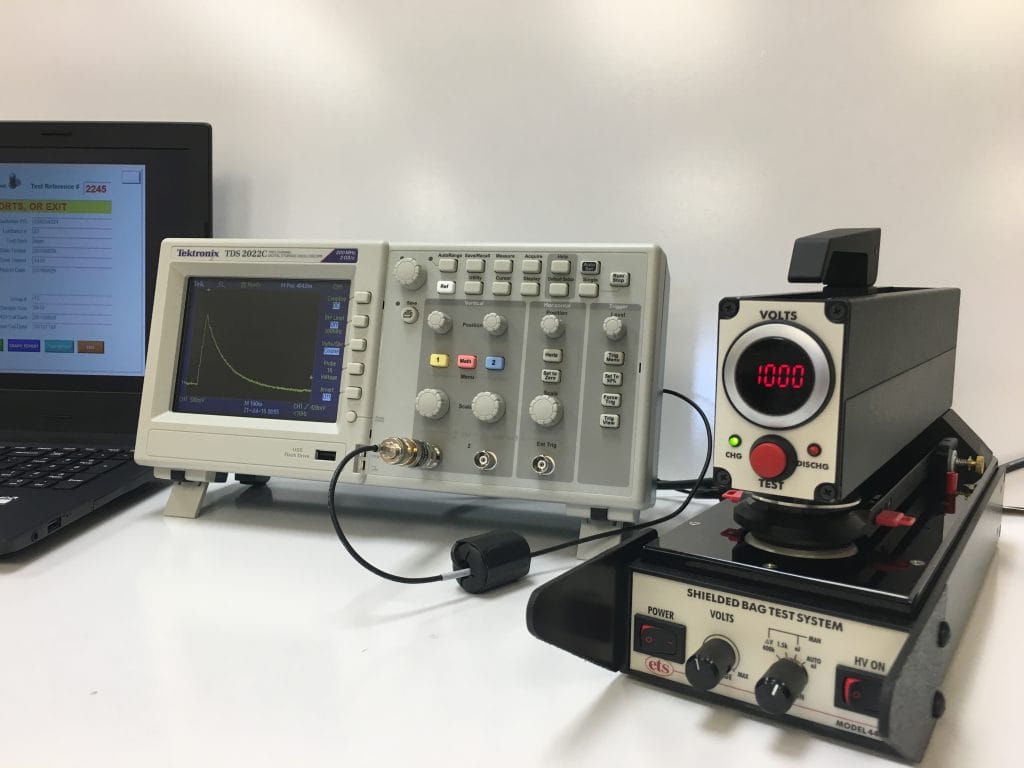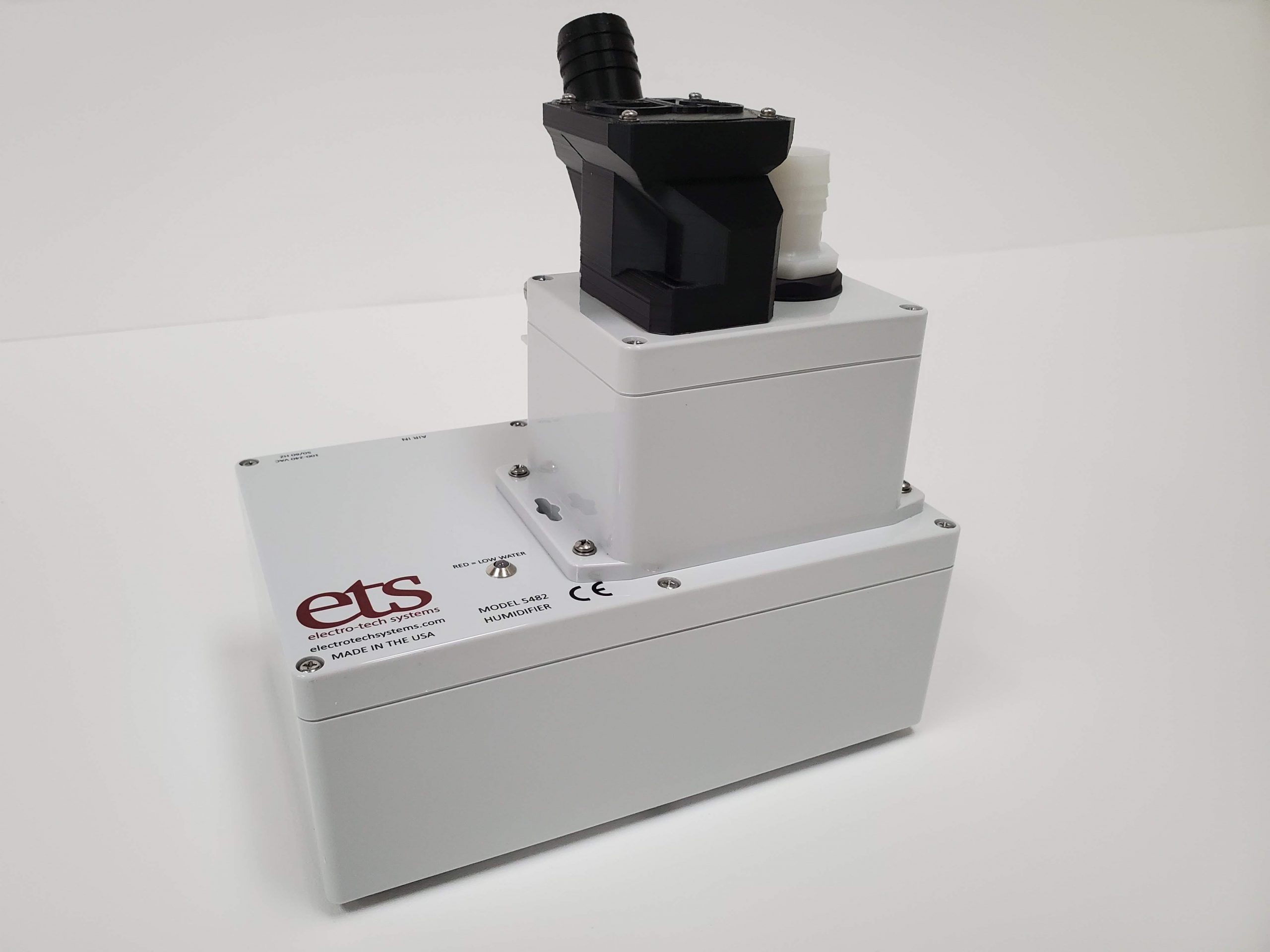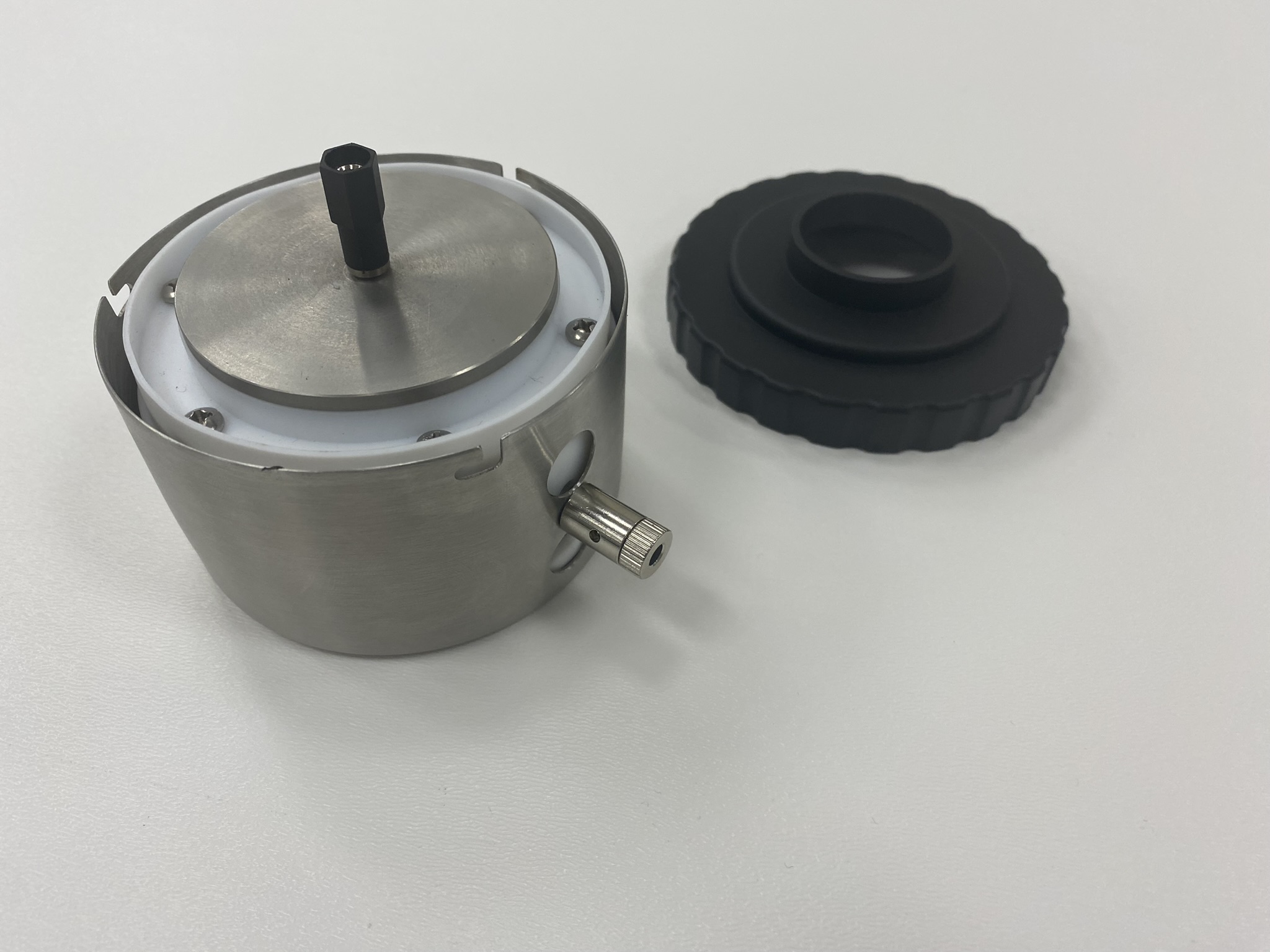Model 931 – Electrostatic Discharge Firing Test System
Overview:
The Model 931 Firing Test System is utilized to determine the ESD susceptibility of pyrotechnic devices, powders and liquids. The system generates electrostatic discharge pulses from ±100 Volts to ±26kV to determine the energy threshold required for ignition. The Model 931 is available with internal RC networks ranging from 100pf to 0.5mf and 0 to 5kW to meet the requirements of MIL and other standards.
The 2-piece Electrostatic Discharge Simulator consists of a Control Unit housing all low voltage electronics and controls plus a voltage display and a Discharge Unit containing the HVPS, polarity reversing module, plus capacitor and resistor selector modules. Energy is stored in capacitor banks during the charging cycle. A discharge pulse is produced when a high voltage gas filled relay disconnects the charged capacitor from its charging source and connects it to the output of the FTS Discharge Unit.
ESD pulses are applied to the test sample via direct connection to the device, or through a needle electrode placed a fixed distance from a sample within the test chamber.
MIL-STD-1751A, (Group 1030 Test Methods) along with MIL-STDs 1512, 1576 (Method 2205) and MIL-STD-331B (Notice 3) cover the most common test standards for electrostatic discharge sensitivity testing.
Features:
- Range: ±100 to 26,000 volts
- Standard capacitor bank values included:
- 100, 250, 500, 1000, 2000 and 5000 pF
- 0.01, 0.02, 0.05, 0.1, 0.25 and 0.50 µF
- Standard resistors included: 0, 500, 1500 and 5000 ohms
- Firing Test Chamber
- Custom R/C networks available
Standards
- MIL-STD-1751A, (Group 1030 Test Methods)
- MIL-STDs 1512, 1576 (Method 2205)
- MIL-STD-331B (Notice 3)
